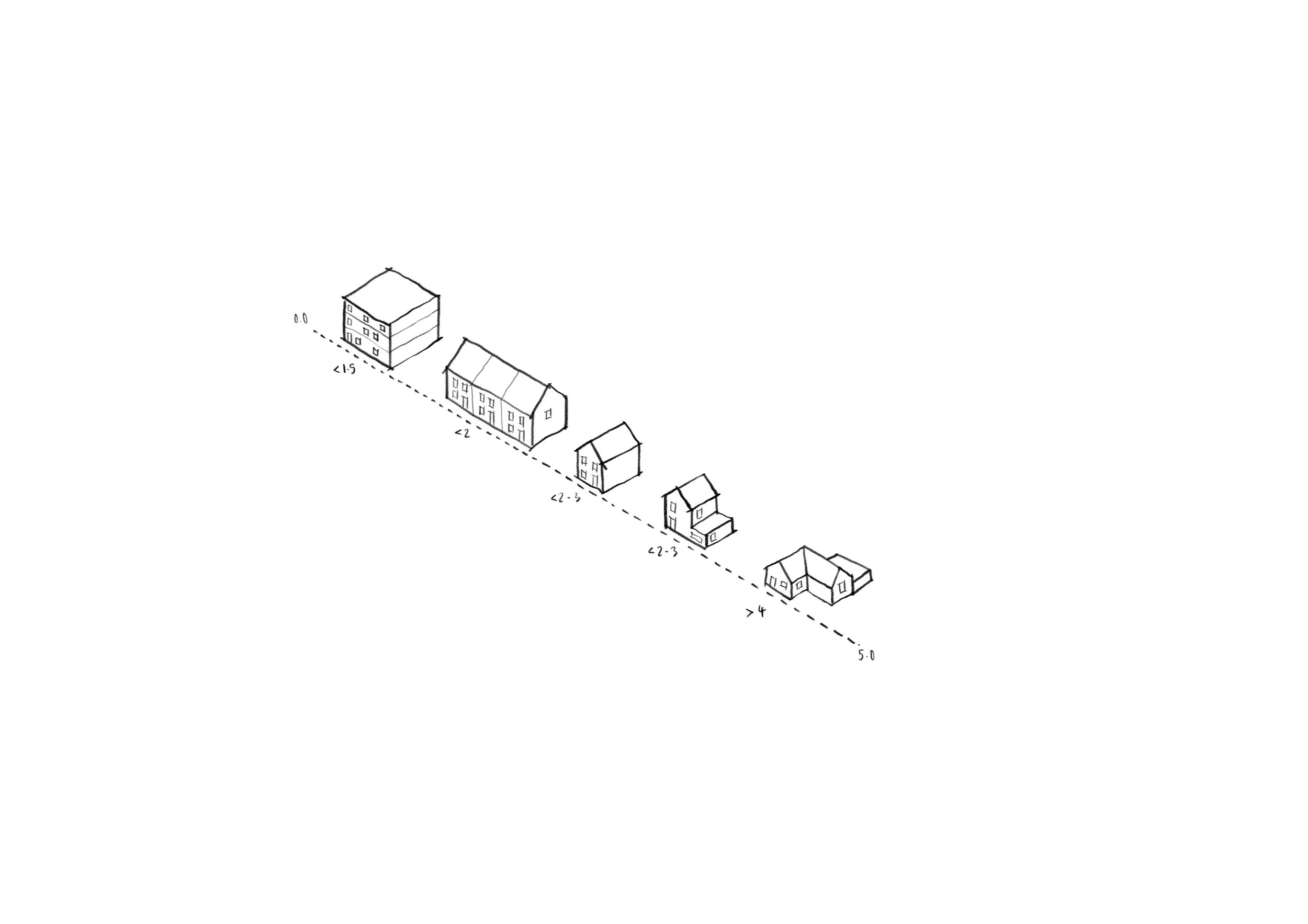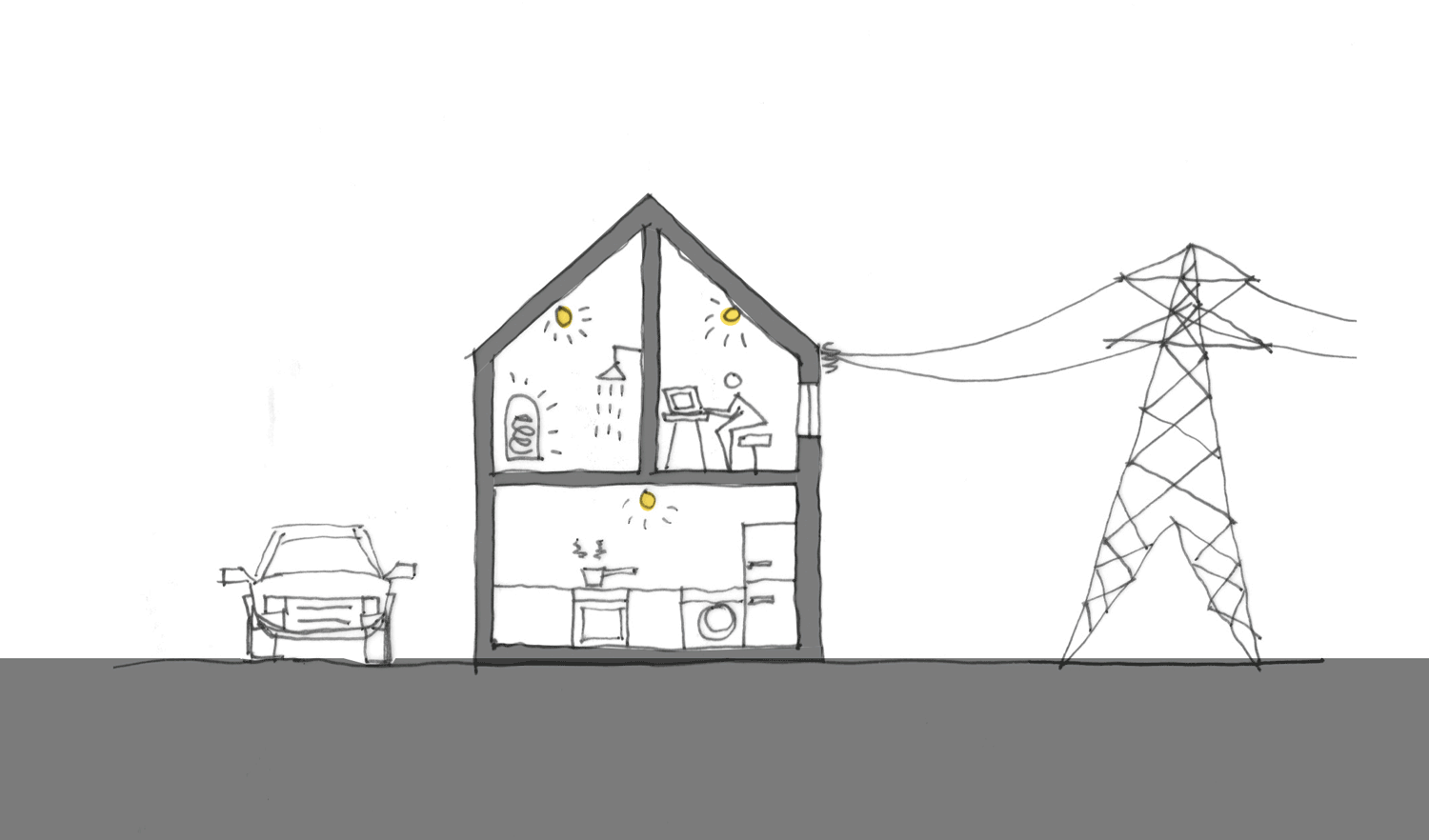Pioneering Sustainability through Fabric-First Design
In a world facing the challenges of climate change, we are conscious of how sustainable design can actively contribute to a greener future. Specialising in fabric-first design, we are passionate about creating buildings that achieve net-zero energy consumption. We are certified Passivhaus CEPH designers and proud members of the AECB, showcasing a commitment to low-carbon design and innovation. Below, we have explained the process that goes into Arbor Architects' approach to sustainability, highlighting key aspects such as building form and orientation, airtightness, high-performance materials/glazing, and natural ventilation.
Building Form and Orientation
Arbor Architects recognises the importance of starting as you mean to go on, and building form and orientation are critical to maximising energy efficiency. By strategically designing homes to capture natural sunlight and leverage passive solar heating, we aim to reduce reliance on external energy sources. Thoughtful consideration of building orientation helps optimise the use of renewable energy, fostering a harmonious relationship between the structure and its surroundings.
High-Performance Insulation
One part of our sustainability approach is the integration of high-performance insulation. We look to go beyond conventional insulation methods, employing cutting-edge materials and techniques to ensure superior thermal efficiency. By minimising heat transfer through walls, roofs, and floors, homes that maintain a comfortable temperature year-round are created, significantly reducing the need for artificial heating and cooling.
Thermal Bridge-Free Construction
Arbor Architects places a strong emphasis on thermal bridge-free construction to prevent heat loss through structural elements. By meticulously addressing potential thermal bridges, we ensure the building envelope remains intact and energy-efficient. This approach not only enhances the overall performance of the structure but also contributes to long-term sustainability by minimising energy consumption.
Airtightness
Achieving a high level of airtightness is crucial for sustainable designs. Airtight buildings help control ventilation, ensuring that heat is retained and external elements are kept at bay. This meticulous attention to detail in sealing the building envelope enhances energy efficiency, providing airtight homes that require less energy for heating and cooling.
High-Performance Materials
We select and specify materials and glazing solutions with a focus on sustainability and energy efficiency. High-performance materials contribute to the durability and longevity of the structures, reducing the need for frequent replacements. Energy-efficient glazing allows natural light to permeate the interiors while minimising heat loss, striking a balance between aesthetics and performance.
Natural Ventilation
We prefer to harness the power of natural ventilation to enhance indoor air quality and reduce reliance on mechanical systems. Incorporating strategically placed windows and vents, we encourage the flow of fresh air throughout the home. This not only reduces the demand for artificial climate control but also fosters a connection between the occupants and their natural surroundings.
How can we do more? In addition to the fabric-first approaches we undertake as a practice, building design can go further by incorporating other methods work alongside these principles, including:
Mechanical Ventilation with Heat Recovery (MVHR) and Intelligent Controls
We recognise the importance of maintaining indoor air quality while minimising energy consumption. Mechanical Ventilation with Heat Recovery (MVHR) systems extract stale air from the building, recovering and reusing the heat energy before introducing fresh, filtered air. Intelligent controls can optimise these systems further, adapting to occupancy patterns and external conditions. This use of MVHR and smart controls ensures a constant supply of fresh air while maximising energy efficiency, creating homes that are both healthy and sustainable.
Efficient Lighting and Controls
Efficient lighting solutions minimise energy consumption. LED lighting and intelligent controls ensure that artificial lighting is used carefully. Motion sensors, dimmers, and automated controls adjust lighting levels based on natural light availability and occupancy, reducing energy usage.
Energy Metering
The importance of promoting energy-conscious behaviour after build completion is more important than ever. Energy metering systems can provide real-time data on energy consumption, empowering homeowners to make informed decisions. By promoting awareness and accountability, it encourages a culture of sustainability, where occupants actively participate in minimising their ecological footprint.
Low Carbon Heating via Heat Pumps
In the pursuit of net-zero energy homes, low-carbon heating solutions can be incorporated through the use of heat pumps. These devices efficiently transfer heat from the environment to the building, requiring less energy compared to traditional heating systems. By adopting heat pumps, homes are heated in an environmentally responsible manner, reducing reliance on fossil fuels and minimising carbon emissions.
On-Site Renewable Energy Generation via Rooftop Solar PV
Embracing the potential of renewable energy by integrating rooftop solar photovoltaic (PV) systems can also be considered. These on-site solar panels harness the power of the sun, generating clean and sustainable electricity.
Our fabric-first design approach sets a new standard for sustainable and eco-conscious living. By prioritising energy efficiency through innovative strategies such as building form and orientation, high-performance insulation, thermal bridge-free construction, airtightness, high-performance materials/glazing, and natural ventilation, we hope to inspire communities to embrace a more responsible way of life. In a world where climate action is imperative, crafting net-zero buildings that not only meet the needs of the present will also pave the way for a brighter, more sustainable future.



